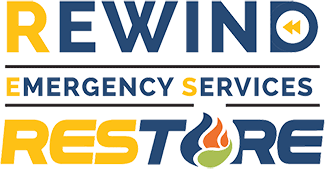Fire & Smoke Damage Restoration Services near Stanton, CA
Fire or Smoke Damage in Stanton? We’re Here to Help — 24/7 ⭐⭐⭐⭐⭐
When a fire occurs in your home or business, the aftermath can be overwhelming. You're left with damage, debris, and uncertainty about what to do next. At Rewind Emergency Services, we understand the stress and urgency that comes after a fire — and we’re ready to help you start putting the pieces back together immediately
Whether your damage is from flames, smoke, or water from firefighting efforts, our Stanton team is trained, certified, and ready to respond.
Why Professional Fire & Smoke Cleanup Matters
Fire and smoke can leave behind more than just visible damage. Residual soot, airborne toxins, and hidden structural issues can pose serious risks to your health and your property. Smoke doesn’t just stay in one area, it can spread through HVAC systems and settle deep into walls, ceilings, and belongings.
At Rewind Emergency Services, we go beyond surface-level cleanup. Our IICRC certified team uses industrial-grade tools and specialized techniques to fully remove contamination, eliminate smoke odor at the source, and restore your property to a safe and comfortable condition.
Attempting to clean up fire damage without the right training can lead to bigger problems, from lingering health hazards to complications with insurance claims. That’s why it’s so important to work with a trusted, certified restoration team from the start, and convenient to choose one near Stanton, California!
Why Homeowners in Stanton, CA Trust Rewind Emergency Services
Local & Responsive - We’re based right here in Southern California. We know the unique fire risks of Stanton — from hillside homes to older electrical systems — and we’re always nearby and ready.
IICRC-Certified Technicians - Our team is fully certified in fire and smoke restoration techniques and uses industry-leading equipment to clean, sanitize, and restore.
We Handle the Entire Process - From debris removal and odor neutralization to structural drying and rebuilding, we manage everything so you don’t have to.
Insurance Experts - We work directly with your insurance company to simplify claims and reduce your stress.
We’re Local - Rewind Emergency Services been serving the Orange County area since 2016. We take great pride in taking care of our neighbors!
What to Expect from Our Fire Damage Restoration Process
Emergency Response – The advantage of being located near Stanton is that we’re on-site fast, ready to assess the damage and secure your property.
Inspection & Plan – We evaluate all damage and create a customized restoration plan.
Debris Removal & Cleaning – We clear burned materials and deep-clean every surface, removing soot and smoke damage.
Deodorizing & Air Purification – Using professional-grade equipment, we remove lingering smoke odors and purify the air.
Repairs & Restoration – We restore your property to pre-fire condition or better.
You’re Not Alone — We’ve Helped Families Just Like Yours
“After our garage fire, we had no idea where to start. Rewind Emergency Services came out the same day, walked us through the process, and helped with our insurance. They made a nightmare feel manageable.”
— Sarah L., Stanton homeowner ❤️
Don’t Wait. The Sooner You Call, the More We Can Save.
Smoke and soot damage worsens the longer it sits. Call us now for a get started on a damage assessment and restoration plan.
📱(714) 494-9940
🕒 24/7 Emergency Service Available
Or send us a message and we'll reply promptly.
Serving Stanton, CA & the Surrounding Areas
We’ve helped homeowners and property managers across Orange County recover from fire, smoke, and water damage. Let us help you get your life back to normal.
Fire Damage Restoration FAQs
How long does the fire damage restoration process take?
The timeline depends on how severe the damage is. Minor smoke damage might be resolved in just a few days, while more extensive fire damage — especially involving structural repairs — can take several weeks. We’ll give you a detailed estimate after the initial inspection.
Can I stay in my home during the restoration process?
That depends on the level of damage and whether your home is safe to occupy. In many cases, it’s best to arrange temporary housing while we complete the work, especially if there are air quality concerns or major repairs underway.
Will my insurance cover fire damage restoration? Most homeowners insurance policies do cover fire damage — but coverage details can vary. We work closely with insurance companies in Stanton and throughout California to make sure the process goes as smoothly as possible for you. We're happy to assist with documentation and communication.
What should I do immediately after a fire?
First, make sure everyone is safe and the fire department has cleared the area. Then, contact your insurance provider and reach out to a professional restoration company like Rewind Emergency Services. The sooner we begin the cleanup process, the more damage we can prevent.
How do you remove smoke odor from my home?
Smoke odor can be stubborn — but we use professional-grade ozone machines, air scrubbers, and thermal fogging equipment to eliminate it completely. Our goal is to leave your home smelling fresh and truly clean, not just masking the odor.
